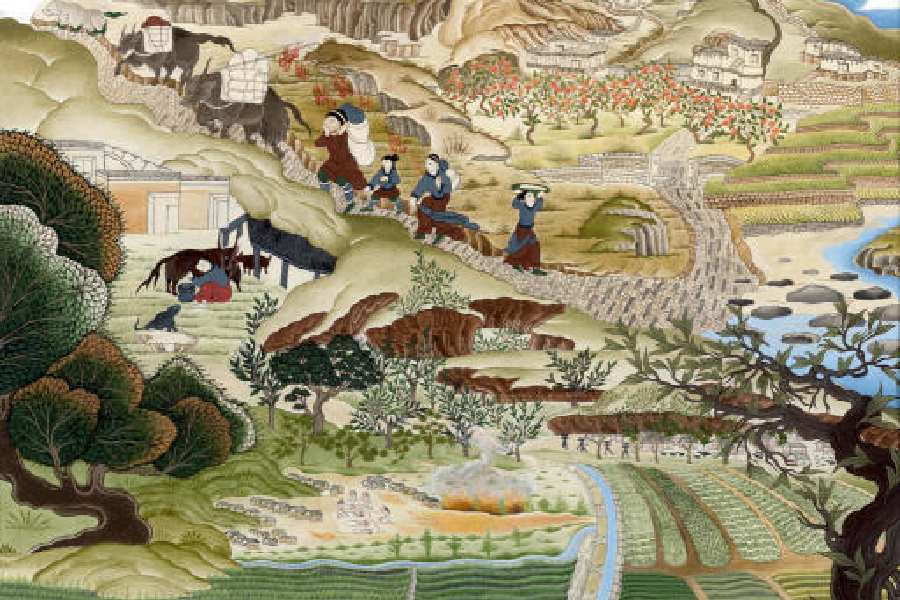Scientists have traced the earliest known case of malignant malaria, caused by the Plasmodium falciparum parasite, to a man buried at a high-altitude Himalayan site named Chokhopani in Nepal around 800 BC who likely acquired it during a trip to the Indian subcontinent.
The Chokhopani case is among 36 ancient malaria cases from the past 5,500 years detected by an international consortium of researchers in a study that has also shown how malaria circulated across the world for centuries, driven by human movements, trade connections, and war.
“Finding malaria that high in the Himalayas was surprising,” Megan Michel, a researcher at the Max Planck Institute for Evolutionary Biology in Germany and lead author of the study, told The Telegraph over the phone. Chokhopani is 2,800 metres above the sea level and far outside the habitat range of the parasite or mosquitoes.
“But it underscores the role of human mobility in malaria even in ancient times,” Michel said. Chokhopani is located along the Kali Gandaki river valley, which once served as a trans-Himalayan highway connecting people on the Tibetan plateau with the Indian subcontinent.
Michel and her colleagues from 80 institutions across 21 countries analysed nearly 10,000 samples of ancient genetic material, or DNA, from the skeletal remains of people. Human teeth can preserve genetic signatures of microbes present in the person’s bloodstream at the time of death.
They found 36 malaria cases — 10 P. falciparum, 21 P. vivax, and others that were combinations of these or other malaria parasites. Their study was published on Wednesday in the journal Nature. P. falciparum and P. vivax currently make up the vast majority of malaria cases. The infection is currently found mainly in Africa, Asia and parts of South America.
An earlier genetic study on ancient genomes from the Himalayas in 2022 had revealed that the infected male in Chokhopani had genetic adaptations at high altitudes, implying that he was a highlander. The scientists believe he was infected probably during a trip to the subcontinent.
The study has also found three cases of P. vivax in individuals in Germany, Spain and Russia, each of them between the periods 3,000 BC and 4,000 BC.
The three ecologically disparate sites more than 5,000km apart suggest that P. vivax was widespread across Europe.
“The genetic evidence of ancient malaria correlates well with archaeological and historical records or human movements, including the African slave trade and the colonisation of America,” Michel said.
The analysis provides evidence that the entry of P. falciparum and P. vivax into the Americas had distinct histories. Similarities between the now-eliminated European and ancient South American strains indicate that Europeans brought P. vivax into the Americas.
But P. falciparum likely arrived in the Americas through the trans-Atlantic African slave trade. The researchers also found a P. vivax case from another high-altitude site in the Peruvian Andes mountains from the 15th century which they believe was also rooted in long-distance human travel.
Studies in the past had suggested that P. falciparum emerged from gorillas in Africa between 10,000 years and 450,000 years ago.










